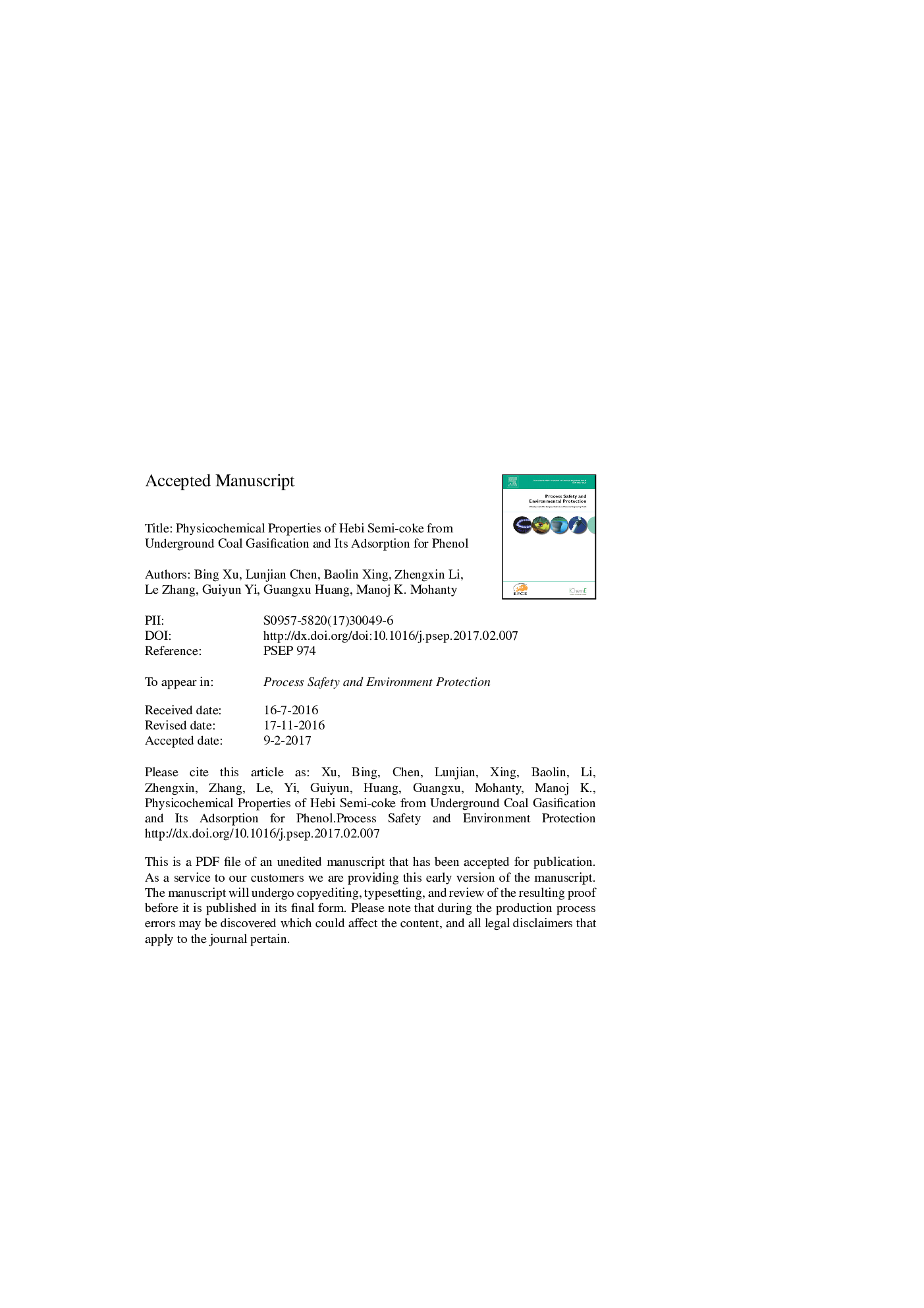| Article ID | Journal | Published Year | Pages | File Type |
|---|---|---|---|---|
| 4980978 | Process Safety and Environmental Protection | 2017 | 17 Pages |
Abstract
Groundwater pollution caused by underground coal gasification (UCG) as well as its purification is a great concern for scientific and engineering community. In the present study, a UCG model test of Hebi coal was carried out by air/steam two-stage gasification method. The physicochemical properties of UCG residual semi-coke samples were characterized by SEM, nitrogen adsorption at 77Â K and FTIR, respectively. Adsorption experiments of phenol onto semi-coke samples were also performed. The results can be summarized as follows: (a) obvious cracks and small voids were observed in semi-coke samples; (b) compared with raw coal, semi-coke presented a larger BET surface area of 21.6Â m2/g, larger pore volume of 0.087Â cm3/g and wider pore size distribution with micro pores in size of 1.5-2Â nm; (c) surface functional groups such as hydroxyl and carbonyl were partially preserved after gasification; (d) and the maximum removal rate of phenol approximately reached 35%. The dispersion forces between Ï electrons of aromatic nucleus in semi-coke and phenol ring and the formation of electron donor-acceptor complex make it work for phenol adsorption.
Keywords
Related Topics
Physical Sciences and Engineering
Chemical Engineering
Chemical Health and Safety
Authors
Bing Xu, Lunjian Chen, Baolin Xing, Zhengxin Li, Le Zhang, Guiyun Yi, Guangxu Huang, Manoj K. Mohanty,
